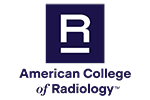Breast Imaging of Pregnant and Lactating Women
Pregnant women under the age of 30 at high risk for breast cancer, pregnant women age 30 to 39 at medium or high risk for breast cancer, and pregnant women 40 and older should receive screening mammography with lead shielding to minimize radiation exposure to the fetus. Alternatively, screening may be performed using digital breast tomosynthesis (DBT), a 3-D mammographic technology. Ultrasonography may be used as an additional screening tool for patients with dense breasts. Ultrasonography is particularly valuable when patients display a noticeable lump. However, ultrasonography may increase the rate of false alarms for cancer detection. When cancer is detected, mammography or DBT may improve visualization of the cancer and its location. Ultrasonography of the armpit region helps to determine the extent of disease.
Bloody nipple discharge may occur during pregnancy or early lactation. This usually goes away by itself. However, continuous bloody nipple discharge may be due to an infection, a noncancerous mass, or, less commonly, breast cancer. The affected breast should be initially evaluated by ultrasonography. Diagnostic mammograms with magnification views of the breast below the nipple and DBT may be useful.
Breast imaging during lactation is the same as for nonlactating women. However, breast tissue tends to be thicker during lactation; therefore, nursing or pumping before examination may improve accuracy of mammography or DBT screening. Ultrasonography may be used as an additional screening tool for medium- and high-risk patients and patients with dense breasts.
See the Breast Cancer Screening page for more information.
This page was reviewed on December 15, 2021


